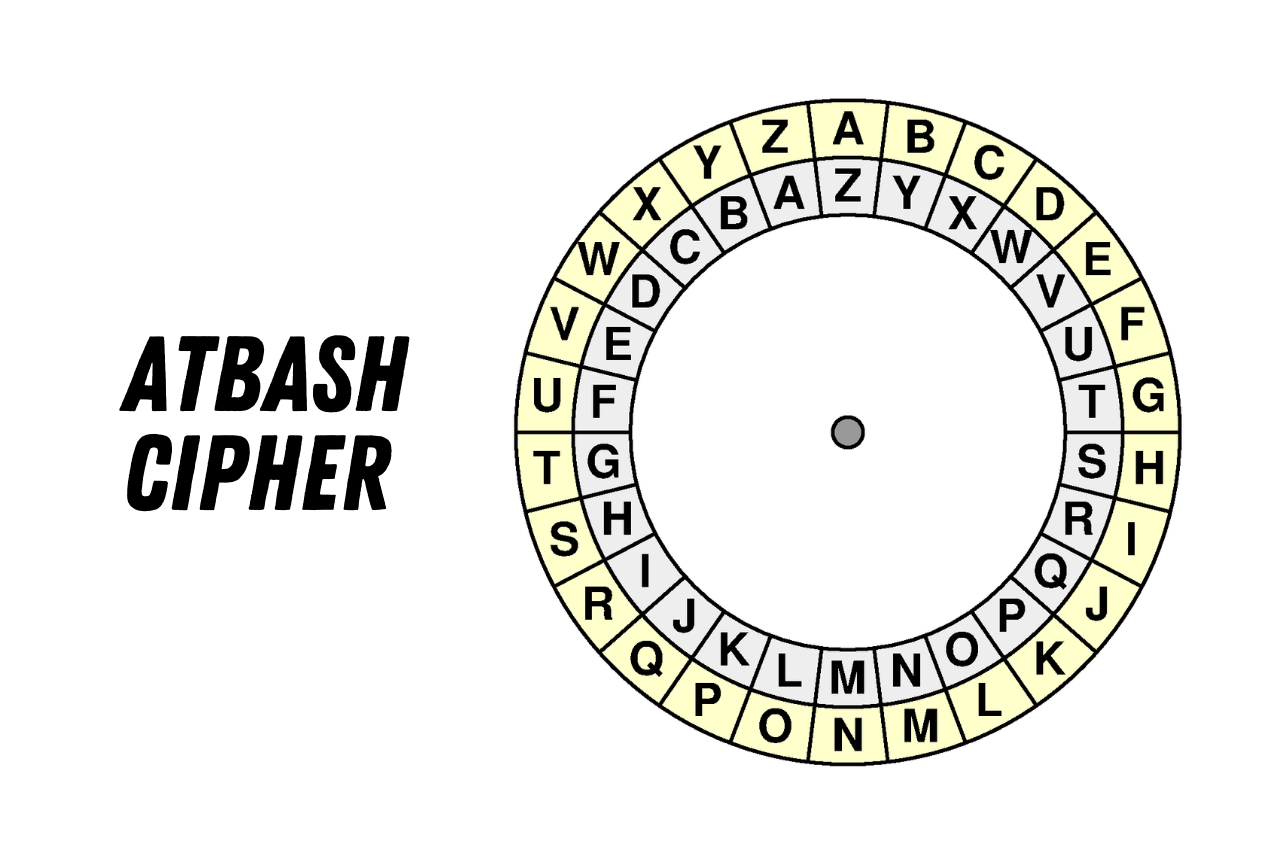
atbash cipher
The Atbash Cipher is one of the oldest and simplest methods of encryption, dating back to ancient times. It involves substituting each letter of the alphabet with its reverse counterpart. Despite its simplicity, the Atbash Cipher holds historical significance and continues to intrigue enthusiasts and cryptographers alike.
Origins and History
The Atbash Cipher traces its origins to ancient Hebrew cryptography, with references dating back to biblical times. It was initially used to encrypt religious texts and preserve their sanctity. Over the centuries, the Atbash Cipher gained prominence in various cultures and civilizations, evolving into a symbol of secrecy and mystique.
How the Atbash Cipher Works
The mechanics of the Atbash Cipher are straightforward yet effective. Each letter of the alphabet is replaced with its reverse counterpart. For example, ‘A’ becomes ‘Z,’ ‘B’ becomes ‘Y,’ and so on. The process is reversible, allowing for easy decryption by applying the same substitution.
Examples of the Atbash Cipher
To illustrate the Atbash Cipher in action, let’s consider a simple example:
- Original message: “HELLO WORLD”
- Encrypted message: “SVOOL DLIOW”
Use Cases and Applications
The Atbash Cipher has been used in various historical contexts, ranging from military communications to religious texts. In modern times, it serves as an educational tool for teaching cryptography principles and fostering an understanding of encryption techniques.
Strengths and Weaknesses
While the Atbash Cipher offers simplicity and ease of use, it lacks robustness and security compared to modern encryption methods. Its susceptibility to frequency analysis and pattern recognition makes it vulnerable to decryption by determined adversaries.
Modern-Day Relevance
Despite its antiquity, the Atbash Cipher retains its relevance in contemporary cryptography discussions. It serves as a foundational concept for understanding encryption algorithms and provides insights into the evolution of cryptographic techniques over time.
In today’s rapidly evolving world, the concept of modern-day relevance holds significant importance across various domains. Whether in technology, culture, or society, staying relevant is crucial for individuals, businesses, and institutions alike.
In the realm of technology, keeping up with the latest advancements and trends is essential to remain competitive. From smartphones and social media platforms to artificial intelligence and blockchain technology, innovations are constantly reshaping industries and changing the way we live and work. Embracing these changes and adapting to new technologies is key to staying relevant in a fast-paced digital landscape.
In terms of culture and society, staying relevant often involves addressing pressing issues and adapting to shifting societal norms. Topics such as diversity, sustainability, and social justice are increasingly becoming focal points of discussion and action. Individuals and organizations that fail to recognize and respond to these evolving dynamics risk being left behind or facing public scrutiny.
Moreover, the concept of modern-day relevance extends beyond mere adaptation to proactive engagement and innovation. It requires a willingness to challenge the status quo, experiment with new ideas, and anticipate future trends. Whether it’s creating groundbreaking products, advocating for social change, or fostering inclusive communities, those who can anticipate and meet the evolving needs of society are more likely to remain relevant in the long run.
In summary, modern-day relevance is about more than just keeping up with the times—it’s about actively shaping the future and making meaningful contributions to the world around us. By embracing change, staying informed, and being proactive in our endeavors, we can ensure that we remain relevant and impactful in an ever-changing world.
Challenges and Considerations
When using the Atbash Cipher, users must be mindful of its limitations and potential vulnerabilities. While suitable for educational purposes and basic encryption tasks, it may not offer adequate protection for sensitive or confidential information.
Conclusion: The Legacy of the Atbash Cipher
In conclusion, the Atbash-Cipher stands as a testament to the enduring fascination with cryptography throughout history. Its simplicity belies its historical significance and contributions to the development of encryption techniques. While overshadowed by more advanced methods, the Atbash Cipher remains an integral part of cryptographic lore, reminding us of the timeless appeal of secrecy and intrigue.
FAQs: Answering Common Queries
Is the Atbash-Cipher secure for modern encryption needs?
- While the Atbash-Cipher is simple and easy to understand, it lacks the robustness required for modern encryption tasks. It is more suitable for educational purposes and historical analysis rather than secure communication.
Can the Atbash-Cipher be decrypted easily?
- Yes, the Atbash-Cipher can be decrypted relatively easily using frequency analysis and pattern recognition techniques. It is susceptible to cryptanalysis methods, especially when applied to longer texts.
What are some alternatives to the Atbash-Cipher?
- There are numerous alternative encryption methods available, including the Caesar Cipher, Vigenère Cipher, and modern cryptographic algorithms such as AES and RSA.
Where can I learn more about the Atbash-Cipher?
- To delve deeper into the Atbash-Cipher and its historical significance, consider exploring academic resources, cryptography journals, and online educational platforms specializing in cryptography.
How can I practice using the Atbash-Cipher?
- You can practice using the Atbash-Cipher by encrypting and decrypting messages manually or using online cryptographic tools and simulators available on various websites.


